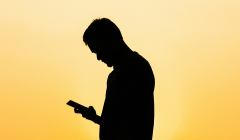
Should brands be doing more to help consumers ditch the doom scroll?
With increasing attention on the negative impact of social media on consumers’ mental health, a growing number of brands are advocating for IRL connection.

From ditching outdated stereotypes of masculinity to creating the conditions where diverse talent can thrive, we asked industry leaders how to supercharge inclusion

Inclusive leadership is rooted in active listening and an understanding that there is no singular lens through which to view or navigate the world.
An understanding of intersectionality is key to this pursuit. As Professor Kimberle Crenshaw of Columbia Law School, explains: “Intersectionality is a lens through which you can see where power comes and collides, where it interlocks and intersects. It’s not simply that there’s a race problem here, a gender problem here, and a class, or LBGTQ problem there. Many times that framework erases what happens to people who are subject to all of these things.”
Crenshaw first coined the term to help explain the oppression of African-American women, and progressive leaders have embraced the concept to ensure diversity isn’t reduced to one singular lens. Yet according to Creative Equals, many communities; queer, older, faith-based, body types, men, disabled, class, caste, etc., are still hardly ever represented authentically in creative work. When they are represented there can be harmful stereotypes, or inauthentic narratives in their portrayal. This disconnect has a huge impact on social inclusion.
From challenging toxic stereotypes of masculinity to creating tangible programmes to remove barriers to entry for diverse talent, industry leaders are rising to this deep-rooted and complex challenge. We asked them to share their insights on how brands can supercharge authentic inclusion and approach DEI with a more intersectional lens.

Brands, PLEASE step up and support those creating conditions that will allow diverse talent to enter the industry, to thrive and rise. Diversity is multifaceted - class, race, gender, disability, sexuality, parenthood, age and location (with its associated opportunity poverty) are just some of its components.
To supercharge change long-term, commitment to impactful change-making projects is needed. We’ve seen a stealth defunding of DEI and even outright rejection of it across the ecosystem in the last 12 months - it’s vital that brands lean in and support our efforts.
MEFA CEO, Naren Patel, decided to launch the MEFA awards when a recent survey indicated that businesses were experiencing “DEI fatigue”; they were under so much pressure that diversity and inclusion started taking a back seat.
DEI departments have been disbanded at the tech giants, and by December 2023 open calls for di-vestment were heard - with Elon Musk declaring on X that ‘DEI must Die’.
Brands, your busy day job is serving your brand consumers - our day job is supporting multiple communities with many intersectional identities to win at the world of work. So please, reach out to third-party experts who can make authentic inclusion a reality for you - it’s not going to happen if it’s not a future-proofed commitment.

Authentic inclusion and representation must be viewed through an intersectional lens. Organisations often take a homogenous, one-size-fits-all approach to DEI, but grouping communities together can conflate experiences, with some people’s unique perspectives getting lost entirely.
Humans are complicated, with their identities made up of multiple parts. Intersectionality helps us to understand that discriminations are interconnected, and a person can feel discrimination towards different parts of their identity at different times, or all at once. The lived experience of a white cis gay man is different to that of a black trans woman, despite both being part of the LGBTQIA+ community.
Brands looking to create more authentic and inclusive brand experiences must recognise the diverse ways individuals can be marginalised, and reflect their diverse perspectives back to them. This starts with a comprehensive understanding of who your consumers are. A lot of work has been done by communities themselves to give brands a head start, from Outvertising’s Consumer Report to It Takes a Village’s upcoming study into the experiences of black women across the industry. So, start using these insights to serve your consumers who are calling out for their individual experiences to be seen.

There exists a significant disparity between men's current aspirations and how brand communications depict them, leading to feelings of inadequacy among men and impacting their self-esteem, mental well-being, and brand relationships. The pandemic prompted a shift in men's priorities, emphasising emotional connections over material success. However, brands have yet to adapt, resulting in diminished brand equity and short-term sales, as per extensive Kantar research. Brands engaging with men must reconsider their portrayal to align with evolving aspirations, fostering growth and advancing gender balance. These are the conclusions from our latest BBD Perfect Storm New Macho, “The Price of Success”, based on nationally representative research conducted in the UK and US.
Brands can do more regarding how they represent men and boys from a DEI angle. For example, think about diversity not just from a gender, age, race, or diverse-abilities perspective, but also from different male values; representing a range of traditional and progressive masculine values for different men to feel included. Also, help older men reconnect with meaning; show them how important they are as role models for younger generations, or the positive impact their activities can have on other people and the planet.
Photo credit: (C) BronacMcNeill
Looks like you need to create a Creativebrief account to perform this action.
Create account Sign inLooks like you need to create a Creativebrief account to perform this action.
Create account Sign in